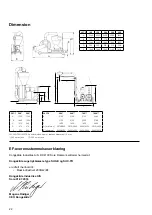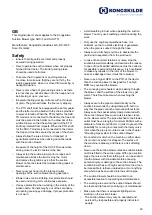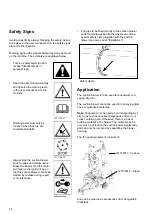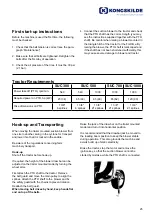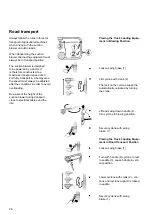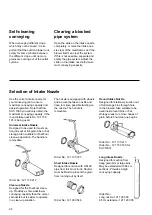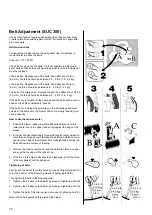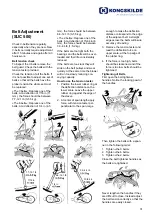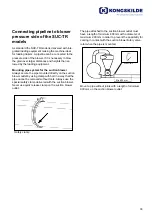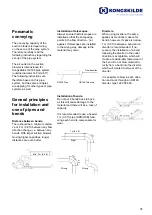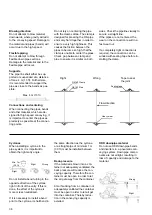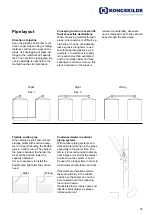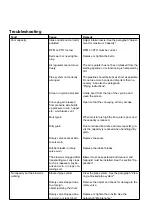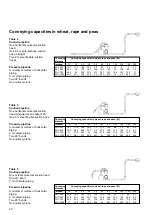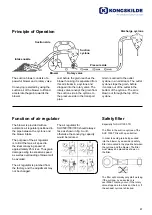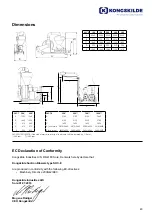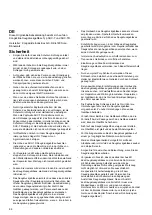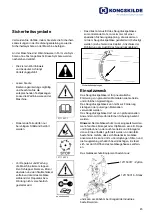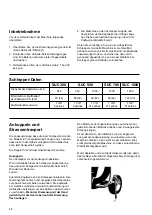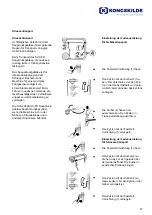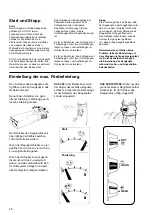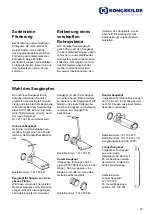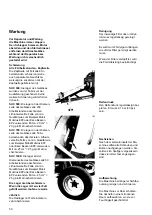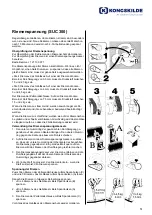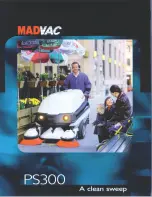
36
Blowing direction
Do not attempt to blow material
downwards, where gravity will add
to the conveying speed. Damage to
the material and pipes (bends) will
occur due to the high speed.
Flexible piping
Do not attempt to blow through
flexible down pipe sections.
Damage to the material and to the
flexible pipe will occur.
Supports
The pipe line shall either be sup-
ported or suspended at a distance
of max. 4 m (13 ft). Furthermore,
it is recommended to support the
pipe as close to the bends as pos-
sible.
Connections and centering
When connecting the pipes, bends
and other material, which are de
-
signed for high speed conveying , it
is important to center the pipes as
precisely as possible at the connec-
ting points.
Cyclones
When installing a cyclone in the
pipe system, it is important to
obtain the right entry angle.
Do not install a bend turning in the
opposite direction of the cyclone
right in front of the entry. If this is
done, the effect of the cylone is
more or less neutralized.
If it is necessary to install a bend
prior to the cyclone, it shall bend in
Tape to seal
the joint
Sealing tape
Heavy wear
Right
Right
Wrong
Min. 1 m
(3.3 ft)
Max. 4 m (13 ft)
Do not rely on centering the pipe
with the clamps alone. The clamp is
designed for pressing the OK-pipe
ends very hard together in order to
ensure a very high tightness. This
causes the friction between the
pipes to become so high, that the
clamp is unable to center the pipes.
Check gap between clamp and
pipe to ensure it is similar on both
Wrong
Right
OK160 Clamp
OK160 Pipe
Flow direction
sides. Check the pipeline visually to
secure a straight line.
If the pipes are not centered, the
wear on the connection result in a
fast wear out.
If a completely tight connection is
required, the connection can be
winded with sealing tape before in
-
stalling the clamp.
Right
Wrong
the same direction as the cyclone,
or a straight pipe of minimum 1 m
(3.3 ft) must be installed between
them.
Back-pressure
If the material is blown into a con
-
tainer not adequately ventilated, the
back pressure will reduce the con
-
veying capacity. Therefore the con-
tainer must be open in order to let
the air get away from the container.
Also if sucking from a container not
adequately ventilated the container
must be open in order to let air get
into the container. Thereby reduc-
tion in the conveying capacity is
avoided.
OKD downpipe material
Do not use OKD downpipe bends
and diverters in a pneumatic con-
veying system. Down pipe compo
-
nents are not airtight, resulting in
loss of capacity and damage to the
material.
↑
↑
↑
↑

